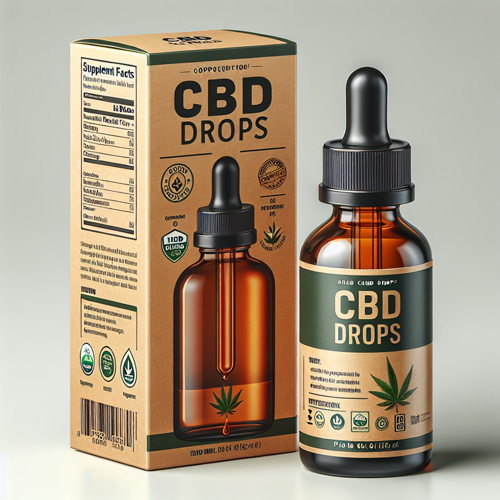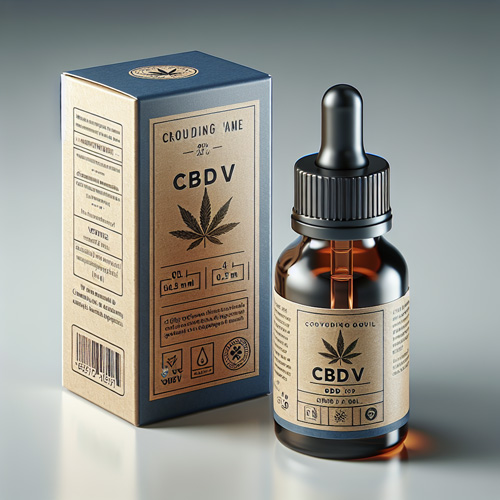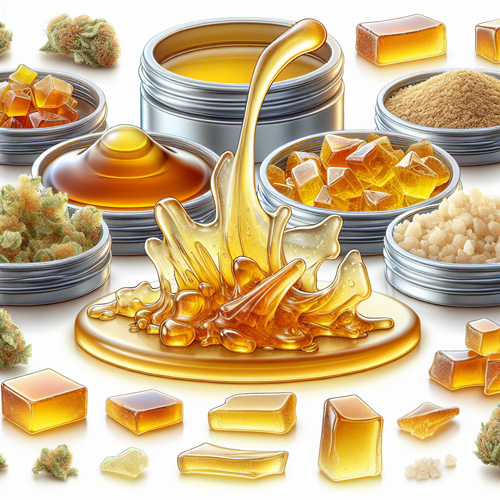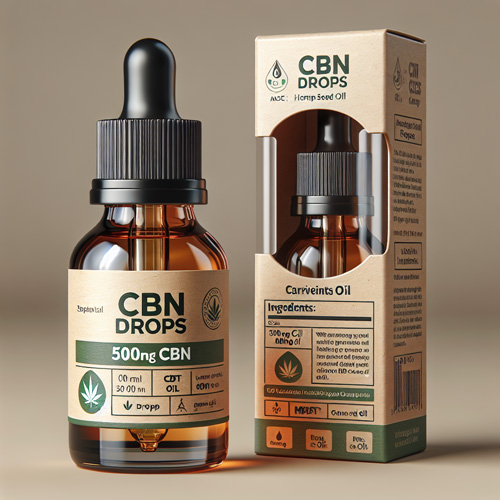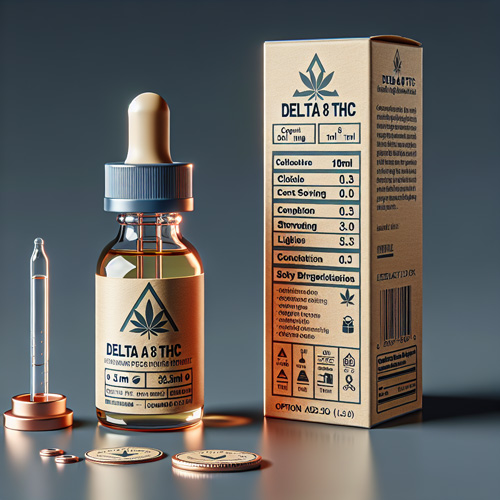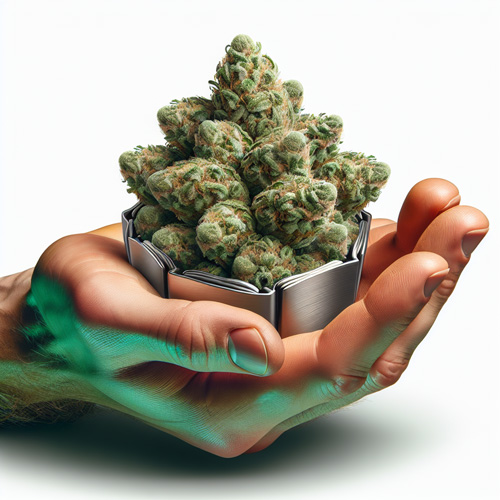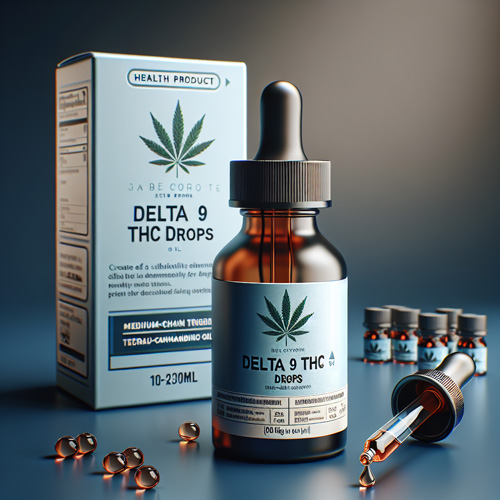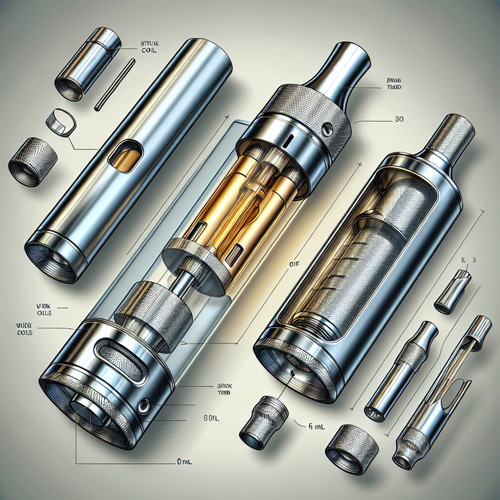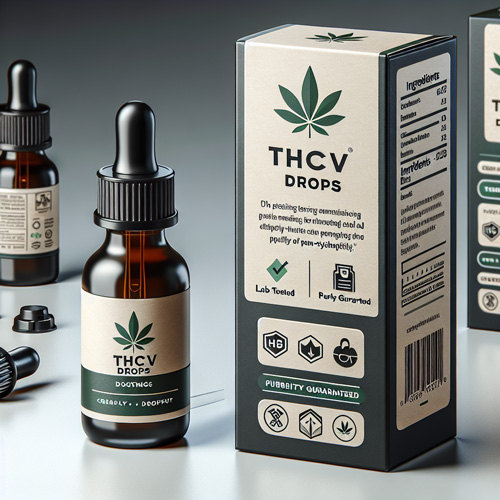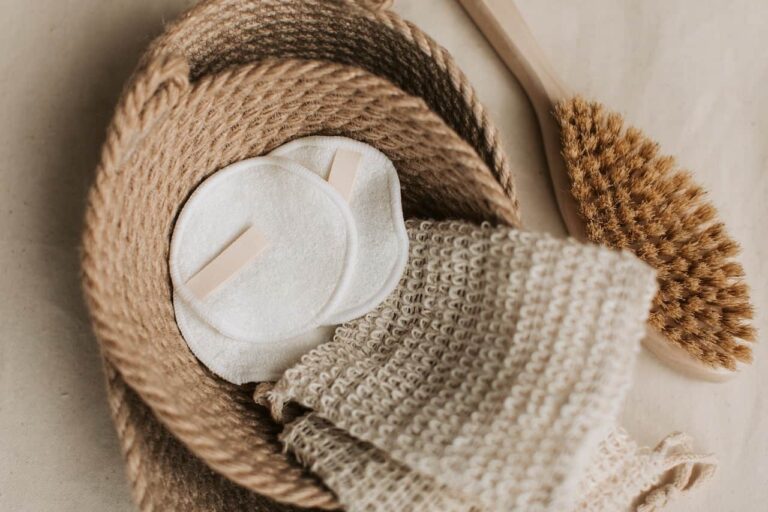
Benefits of Eco-Friendly Hemp Materials
What is Hemp?
Hemp is a versatile and sustainable natural fiber that is derived from the cannabis sativa plant.
It has been cultivated for thousands of years for its various uses, including fabric production. Hemp fibers are known for their superior strength, making them a great alternative to synthetic fabrics and conventional cotton. This eco-friendly material is widely celebrated for its numerous benefits and is increasingly being embraced by the fashion industry.
With deep roots in the hippie culture, hemp has gained recognition for its low environmental impact. It requires minimal water and fertilizers to grow, and its woody core can be used as a valuable raw material. Additionally, hemp fabrics have antimicrobial properties that can help reduce the need for harmful chemicals in the manufacturing process.
By choosing hemp clothing and products, consumers can contribute to the reduction of carbon dioxide emissions and the conservation of water resources, while enjoying the durability and softness of cotton. Hemp truly offers a sustainable and excellent choice for fashion and beyond.
Benefits of Eco-Friendly Hemp Materials
Hemp is not just a versatile plant; it is also a sustainable option for eco-friendly materials. One of the key benefits of hemp is its ability to grow without the need for harsh chemical herbicides or pesticides. This means that hemp production has a lower environmental impact compared to other crops. In fact, hemp is known to replenish soil quality, helping to make the land more fertile for future crops.
Another advantage of hemp is its ability to capture carbon from the atmosphere. Hemp plants have deep roots that can reach down into the soil, pulling carbon dioxide out of the air and storing it underground. This makes hemp a valuable tool in combating climate change.
In addition, hemp requires significantly less water compared to cotton. Cotton is notorious for its high water requirements, but hemp can thrive with much less. This makes hemp a more sustainable option in regions where water scarcity is a concern.
When it comes to fabric, hemp offers many advantages. It is extremely durable, stronger than cotton, and has a longer lifespan. Hemp fabric can withstand repeated washings and retains its shape, making it a great choice for long-lasting garments and products. Furthermore, hemp fabric is versatile and can be used in a wide range of products, from clothing to furniture upholstery.
Using eco-friendly hemp materials has numerous benefits. It is a sustainable option that does not rely on harsh chemicals, helps replenish soil quality, captures carbon, and requires less water compared to cotton. Additionally, hemp fabric is durable and versatile, making it an excellent choice for a wide range of products. Incorporating hemp into our everyday lives can contribute to a more sustainable and environmentally friendly future.
Properties of Hemp Fibers
Hemp fibers possess a wide range of remarkable properties that make them an excellent choice for eco-friendly materials. Firstly, hemp fibers are renowned for their incredible strength. In fact, hemp is up to three times stronger than cotton, lending durability and longevity to any product made from it.
Additionally, hemp fibers have a natural softness akin to cotton, ensuring comfort without compromising on sustainability. Another remarkable property of hemp fibers is their antimicrobial nature. This means that hemp fabrics naturally resist the growth of bacteria and fungi, making them a hygienic choice for clothing and other textile applications.
Furthermore, hemp fibers have excellent moisture-wicking properties, allowing them to efficiently absorb and release moisture, contributing to a comfortable and breathable fabric.
Lastly, hemp’s ecological footprint is significantly lower than conventional cotton, as it requires less water, fewer pesticides, and less land for cultivation. With its numerous benefits, hemp fibers have positioned themselves as a leading contender in the quest for sustainable and eco-friendly textiles.
Strength and Durability of Hemp Fibres
Hemp fibers are renowned for their exceptional strength and durability, making them one of the most sought-after natural fabrics in various industries. Compared to other natural fibers, hemp is significantly stronger and more resistant to wear and tear.
In fact, hemp fibers are 10 times stronger than cotton fibers, demonstrating their high tensile strength. This means that hemp fabrics can withstand greater strain and pressure without breaking or losing their integrity. This superior strength makes hemp fabrics ideal for applications requiring durability and long-lasting performance.
The incredible durability of hemp fibers has been recognized for centuries. Sailors in the past favored hemp ropes and sails because they could endure the harsh and unpredictable conditions at sea. The resilience and long lifespan of hemp materials were crucial for ensuring the safety and efficiency of maritime expeditions.
Hemp fabric offers undeniable advantages over other natural fabrics, particularly due to its remarkable strength and durability. Its ability to withstand high stress levels and resist damage makes it an excellent choice for numerous applications, from fashion and textiles to construction and industrial purposes.
Hemp fibers possess exceptional strength and durability, making them an ideal choice for various industries. With a tensile strength three times that of cotton and a reputation for being highly durable, hemp fabrics continue to be favored for their exceptional performance and longevity.
Softness of Cotton Versus Hemp Clothing
When it comes to clothing, cotton is often associated with softness and comfort. Its natural fibers provide a luxurious feel against the skin, making it a popular choice for garments. However, hemp clothing should not be underestimated in terms of softness. While it may not have the initial softness of cotton, hemp fabrics can become incredibly soft and comfortable over time, especially after multiple washes.
Hemp fabrics have the ability to soften with each wash, becoming more supple and pleasant to wear. This is due to the natural fibers in hemp loosening and breaking in, resulting in a softer texture. So, while cotton may have a head start in terms of initial softness, hemp clothing can catch up and even surpass cotton in terms of comfort.
Additionally, hemp can also be blended with other fibers such as cotton or silk to create a softer feel. This blend allows for the best of both worlds, combining the softness of the other fibers with the durability and sustainability of hemp. The result is a fabric that is not only soft against the skin but also has the added benefits of being eco-friendly and long-lasting.
While cotton may be known for its immediate softness, hemp clothing can become equally soft and comfortable over time, especially after multiple washes. Additionally, hemp can be blended with other fibers to enhance its softness. So, if you’re looking for a natural, comfortable, and sustainable option, hemp clothing is definitely worth considering.
Times Stronger Than Cotton
One of the most remarkable qualities of hemp fibers is their incredible strength, which is why hemp is often touted as being “times stronger” than cotton. Several factors contribute to this superior strength. First, hemp fibers have a longer length compared to cotton fibers. Longer fibers result in a stronger yarn and ultimately a more durable fabric.
Moreover, hemp fibers have a higher tensile strength, meaning they can withstand greater pulling force without breaking. This strength surpasses that of cotton, making hemp garments more resistant to wear and tear, and less likely to develop holes or snags over time.
In addition to its strength, hemp is also highly durable, making it a long-lasting material choice. Hemp fabrics can withstand repeated washings without losing their shape or becoming worn out, ensuring that hemp garments continue to look and perform well for a long time.
Beyond its impressive strength and durability, hemp fabric also offers significant environmental benefits. Hemp requires significantly less water to grow compared to cotton, reducing its ecological footprint. Furthermore, hemp cultivation does not rely on the use of harmful chemicals, making it a more sustainable and eco-friendly option.
To combine the strength and environmental benefits of hemp with the comfort of cotton, blending hemp with other fibers is an excellent choice. This allows for the creation of fabrics that are not only soft against the skin but also have the added advantages of being durable and sustainable.
Hemp’s incredible strength, durability, and environmental benefits make it a superior choice compared to cotton. Its ability to surpass cotton in terms of tensile strength and longevity, coupled with its sustainable nature, positions hemp as a truly remarkable and desirable material for a wide range of applications.
Tensile Strength of Hemp Clothing
Hemp clothing stands out for its remarkable tensile strength, which plays a crucial role in its significance as a sustainable and durable fabric. The fibers derived from the hemp plant are exceptionally strong and boast a tensile strength that is three times higher than that of cotton.
This outstanding strength allows hemp clothing to withstand greater pulling force without breaking or tearing. Consequently, hemp garments are known to be highly resistant to wear and tear, making them less likely to develop holes or snags over time. This durability is a testament to the robustness of hemp fabric and its ability to endure harsh conditions.
The longevity of hemp clothing is another notable benefit attributed to its high tensile strength. Even with repeated washings, hemp fabrics retain their shape and integrity, ensuring that garments continue to look and perform well over an extended period. This longevity not only saves money but also contributes to reducing waste in the fashion industry.
The exceptional tensile strength of hemp clothing makes it an excellent choice for anyone seeking durable, long-lasting, and sustainable apparel. By investing in hemp garments, consumers can enjoy all the benefits of a fabric that not only withstands wear and tear but also has a significantly lower environmental impact. With its remarkable resistance and longevity, hemp clothing is a smart choice for those looking to make mindful purchasing decisions.
Environmental Benefits of Using Hemp Fabric
Using hemp fabric as a sustainable alternative in various industries brings about numerous environmental benefits. Hemp, derived from the cannabis sativa plant, has deep roots in history and is gaining popularity for its eco-friendly qualities. From cultivation to production, hemp materials have a significantly lower ecological footprint compared to conventional cotton. This article explores the various benefits of using hemp fabric for a more sustainable future.
Sustainable Fabrics and Natural Fiber Choices
When it comes to sustainable fabrics and natural fiber choices, there are numerous options available that can benefit both consumers and the environment. These fabrics not only offer a wide range of benefits but also contribute to a greener and more eco-friendly fashion industry.
One of the most popular choices in sustainable fabrics is hemp. Hemp fabric is made from the fibers of the hemp plant, an industrial hemp variety of the cannabis sativa plant. This versatile material offers a range of benefits, including reduced water usage, zero chemical use, zero waste, and carbon positivity.
Compared to conventional cotton, cultivation of hemp requires significantly less water for cultivation. It is also grown without the use of harmful chemicals and pesticides, making it a healthier choice for both the wearer and the environment. Additionally, hemp fabric production generates zero waste as every part of the plant – from the woody core to the fibers – can be utilized.
Moreover, the growing acres of hemp cultivation has a positive effect on soil health, as it naturally replenishes nutrients and prevents soil erosion. This makes it an excellent choice for sustainable textiles.
Sustainable fabrics and natural fiber choices, like hemp fabric, offer a myriad of environmental benefits. These materials not only help reduce water usage and chemical consumption but also have a positive impact on soil health. Making the switch to sustainable fabrics is a small but significant step towards a more sustainable and eco-friendly fashion industry.
Organic Cotton Versus Hemp Clothes
When comparing organic cotton and hemp clothes, there are several key differences in terms of their characteristics and advantages.
Organic cotton, while popular in the fashion industry, requires more resources to cultivate. This includes a significant amount of water, as well as large areas of land. Additionally, the production of organic cotton often involves the use of pesticides, which can have negative environmental effects.
On the other hand, production of hemp is considered more environmentally friendly. Hemp can grow with minimal water and pesticides, making it a sustainable choice. It requires less water compared to organic cotton and can be grown on smaller plots of land. Hemp also has the advantage of being naturally resistant to pests, reducing the need for pesticides.
However, it is worth noting that the cost factor differs between the two materials. While organic cotton is typically more expensive than conventional cotton, hemp clothes tend to be even more costly due to the limited availability of hemp fabrics.
While both organic cotton and hemp clothes have their advantages, the benefits of hemp fabric stands out for its minimal resource requirements and eco-friendly characteristics. Despite being more expensive, hemp is gaining popularity as a sustainable alternative in the fashion industry.
Avoiding Toxic Chemicals in the Fashion Industry
The fashion industry has long been associated with the use of toxic chemicals in the manufacturing process. These chemicals, such as pesticides, herbicides, and insecticides, have detrimental effects on both the environment and human health.
Toxic chemicals used in conventional fabric production pollute waterways, harm wildlife, and contribute to soil degradation. In addition, they pose a serious risk to the health of garment workers who are exposed to these chemicals on a daily basis.
In contrast, hemp processing offers a sustainable alternative that does not require the use of toxic chemicals. Hemp is naturally resistant to pests, meaning there is no need for pesticides, herbicides, or insecticides during cultivation. This reduces the environmental impact and eliminates the harmful effects associated with chemical usage.
Furthermore, hemp’s organic properties make it a safer and healthier option for both consumers and the environment. Hemp textiles are free from chemical residues, making it suitable for people with sensitive skin or allergies. By choosing hemp clothing, consumers can support a more sustainable and ethical fashion industry that prioritizes the well-being of people and the planet.
By avoiding toxic chemicals in the fashion industry and embracing hemp clothing as a sustainable alternative, we can make a positive impact on the environment and our own health. Let’s choose fashion that is both stylish and safe, for a greener future.
Historical Uses and Deep Roots of the Hemp Plant
The hemp plant has a rich history and deep roots in human civilization. For thousands of years, hemp has been cultivated and utilized for a variety of purposes.
From its origins in East Asia to its introduction in Europe and America, the hemp plant has played a significant role in the development of different cultures and industries. This versatile plant has been used for food, medicine, textiles, and even building materials.
Today, as the world recognizes the importance of sustainable fiber and eco-friendly fabrics, the historical uses of the hemp plant provide a strong foundation for the growing popularity of hemp in various industries.
The History of the Use of Hemp Crops in Textiles
The history of hemp crops in textiles dates back thousands of years. Originating in Central Asia, hemp cultivation traces its roots to ancient civilizations such as the Chinese and European cultures. Hemp fibers were highly valued for their versatility and strength, making them an essential raw material for a wide range of purposes.
In China, hemp was cultivated for producing various materials, including building materials, garments, medicine, and even paper. The Chinese recognized the exceptional durability and tensile strength of organic hemp fibers, making it an ideal choice for textiles. Similarly, in Europe, hemp was widely used in textile production, particularly for making clothing.
The significance of hemp in different cultures cannot be overstated. It played a crucial role in providing communities with essential resources and materials. However, as time passed, hemp faced opposition due to its association with the cannabis sativa plant, which led to its eventual outlawing in many countries.
Unfortunately, the ban on hemp cultivation was a consequence of its close relation to marijuana and the negative stigma associated with it. Consequently, the rich history and immense potential of hemp in textiles were overshadowed by its controversial counterpart.
Nonetheless, the recent resurgence of interest in sustainable textiles and eco-friendly materials has sparked a renewed curiosity in hemp. As people become more aware of the benefits of hemp, it is gradually making a comeback in the fashion industry and beyond.
The history of hemp in textiles is a tale of its long-standing cultivation and utilization in various cultures. Its association with marijuana hindered its progress for a while, but now it is making a steady comeback as a sustainable and eco-friendly alternative in the production of fabrics and other materials.
Ancient Philosophies About the Power Behind the Woody Core of the hemp Plant
Ancient philosophies held strong beliefs about the power and significance of the woody core of the hemp plant. In many ancient civilizations, such as China and Egypt, the hemp plant was revered for its versatility and durability, particularly in relation to its fibrous core.
Ancient Chinese philosophies attributed a spiritual essence to the woody core of the hemp plant. It was believed that this core represented the plant’s strength and resilience, symbolizing the potential for growth and transformation. The Chinese recognized the fibrous core as the source of the plant’s remarkable durability, making it an essential material for construction, textiles, and even medicine.
Similarly, in ancient Egypt, the fibrous core of the hemp plant held a significant cultural and religious significance. It was believed to possess mystical qualities and was associated with abundance, fertility, and the life-giving power of the Nile River. The Egyptians utilized the woody core of the hemp plant for the production of ropes, sails, and textiles to weave into their clothing and sacred rituals.
These ancient philosophies and cultural beliefs shaped the perception and utilization of hemp throughout history. The reverence for the woody core of the hemp plant led to its extensive use in various aspects of ancient civilizations, including infrastructure, clothing, and spiritual practices. The recognition of the plant’s strength and versatility further emphasized its cultural significance and paved the way for its continued utilization.
Today, as we rediscover the environmentally friendly qualities of hemp, it is essential to acknowledge the deep-rooted philosophies and historical beliefs that highlight the power and potential of the woody core of the hemp plant. By embracing this rich legacy, we can fully appreciate the remarkable benefits of hemp in modern sustainable practices.
Uses for Industrial-Grade Hemp Fibers
Industrial-grade hemp fibers have a wide range of versatile uses across different industries. Due to their durability and strength, these fibers are highly sought after in various applications as an alternative to cotton.
In the construction industry, industrial-grade traditional hemp fibers are used to create strong and lightweight building materials, such as hempcrete. This sustainable alternative to traditional concrete offers excellent insulation properties and has a reduced environmental impact.
The textile industry also benefits from the use of hemp fibers. These fibers can be woven into fabrics, creating durable and long-lasting materials for clothing and other textiles. Hemp fabric is known for its softness and breathability, making it an excellent choice for sustainable fashion.
Beyond construction and textiles, industrial-grade hemp fibers are utilized in the automotive industry for lightweight composites that can replace traditional materials like fiberglass. They are also used in the production of paper, providing a sustainable alternative to wood pulp. Additionally, hemp fibers have natural antimicrobial properties, making them ideal for creating hygienic and eco-friendly products in the healthcare industry.
Moreover, industrial-grade hemp fibers have a high UV light resistance, making them suitable for outdoor applications such as ropes, nets, and even geotextiles for erosion control.
The versatility of industrial-grade hemp fibers is truly remarkable, offering durable and sustainable solutions across multiple industries. Their strength, durability, natural antimicrobial properties, and high UV resistance make them a valuable and eco-friendly choice for various applications.


